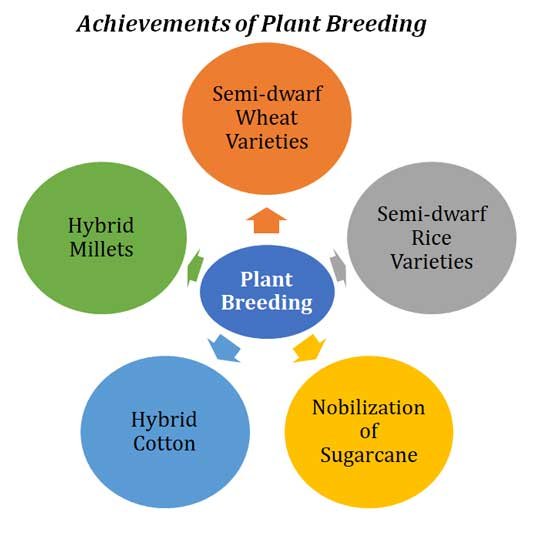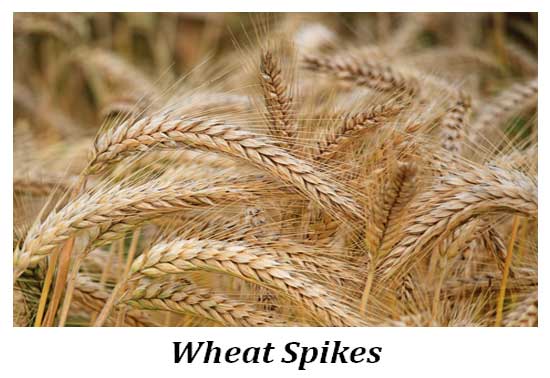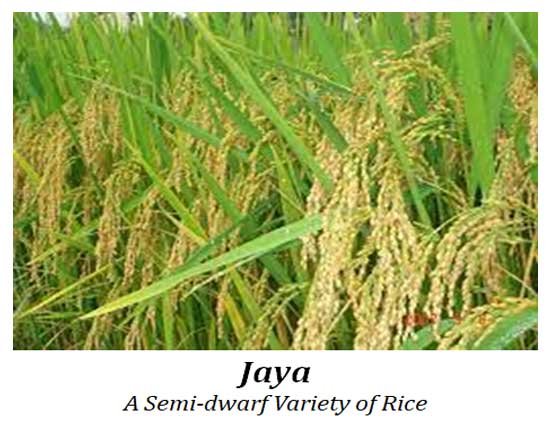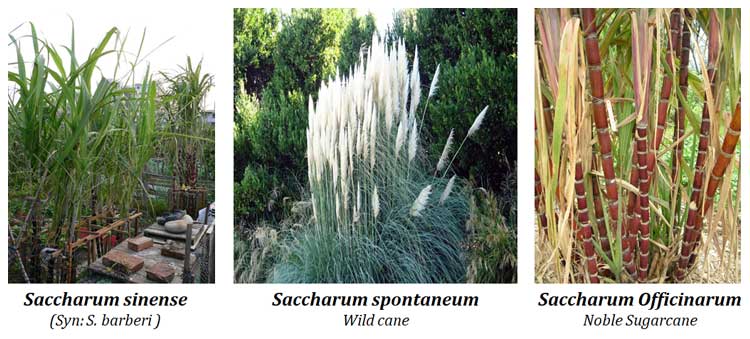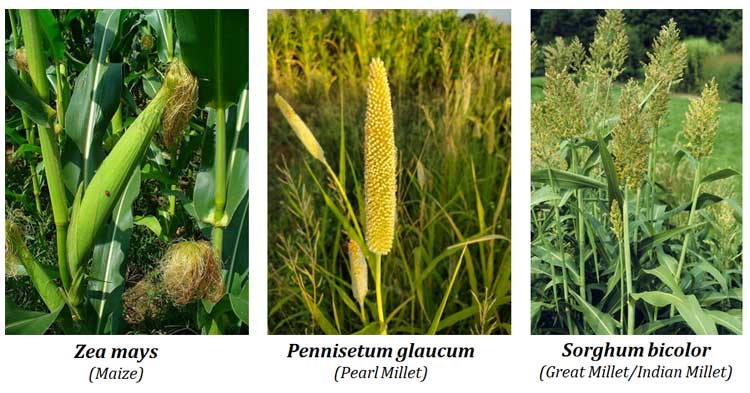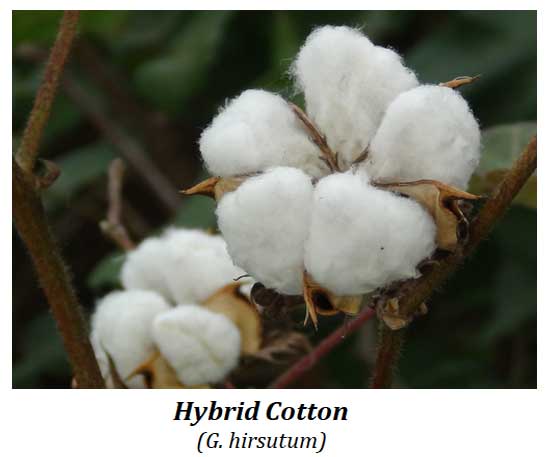In the previous post, we discussed the Objectives of Plant Breeding. Where we discussed the importance of plant breeding in providing food security and higher economic benefits. The present-day crops are very different from their wild relatives. This change in phenotype, higher yields, adaptability and suitability is brought about by the plant breeding activities. Now it is difficult to realize that cultivated plants came from wild weedy species. These changes were accomplished through plant breeding. In this post, we will discuss Major Achievements of Plant Breeding in Agriculture specific to important crop plants.
Achievements of Plant Breeding
(1). Semi-dwarf varieties of wheat
(2). Semi-dwarf varieties of rice
(3). Nobilization of Indian canes
(4). Hybrid millets
(5). Hybrid cotton
(1). Development of Semi-dwarf Wheat Varieties
Ø The development of semi-dwarf varieties of wheat is considered the most important achievement of plant breeding.
Ø First developed by Norman Borlaug at CIMMYT (International Centre for Wheat and Maize Improvement), Mexico
Ø Borlaug is known as the Father of the Green Revolution. He was awarded the Nobel Peace Prize in 1970 in recognition of his contributions to world peace by increasing the food supply.
Ø Dwarfing is an important agronomic quality for wheat since dwarf plants produce thicker stems.
Ø The varieties Borlaug worked with had tall, thin stems.
Ø Taller wheat grasses better compete for sunlight but tend to collapse under the weight of the extra grain (a trait called lodging). The dwarf varieties also show more fertilizer responsiveness.
Ø The source of dwarfing gene was a Japanese variety of wheat called Norin-10.
Ø Norin-10 grew to just two feet (60 – 100 cm) tall, instead of the usual four (150 cm).
Ø Norin-10 possess two genes, Rht1 and Rht2, that resulted in reduced-height, thus allowing better nutrient uptake and tillering
Ø Borlaug hybridized Norin-10 with his disease-resistant cultivars to produce wheat varieties that were adapted to tropical and subtropical climates.
Ø These semi-dwarf hybrid varieties were later distributed worldwide including India and Pakistan where they revolutionized wheat cultivation.
Ø Sonora-64 and Lerma Rojo-64 are the two dwarf wheat varieties which were developed in Mexico and modified through γ rays (Mutation Breeding). These are highly productive varieties and were introduced into India to meet the increasing demands of food consumption during the green revolution in India.
Learn more: Mutation Breeding Techniques
Ø Sarbati-sonora is an amber-seeded high-yielding wheat variety developed from Sonora-64 through mutation breeding by M.S. Swaminathan, the father of the Indian Green Revolution.
(2). Development of Semi-dwarf Rice Varieties
Ø Semi-dwarf varieties of rice have been developed from an early maturing dwarf Japonica variety of rice called Dee-geo-woo-gen from Taiwan.
Ø The first semi-dwarf rice varieties introduced in India in 1966 were Taichung Native 1 (TN-1) and IR-8
Ø TN-1 was developed in Taiwan and IR 8 was developed by International Rice Research Institute (IRRI), Philippines
Ø Now these varieties have been replaced by even more superior semi-dwarf rice varieties developed in India itself like Jaya and Ratna
Ø Jaya and Ratna are lodging-resistant, more fertilizer responsive and photo-insensitive.
Ø Photo-insensitivity has enabled us to grow rice in non-traditional states like Punjab.
Ø Superior features of semi-dwarf varieties of wheat: and Rice
$. Lodging-resistant, fertilizer-responsive and high yielding
$. Resistant to diseases due to the introduction of resistant genes
$. Helped to stabilize wheat and rice production in India
$. Photo-insensitive varieties are suitable for late planting
$. Enabled cultivation in non-traditional areas
(3). Nobilization of Indian canes:
Ø Nobilization refers to the breeding theory of the development and utilization of wild germplasm for the improvement of crop plants.
Ø Nobilization of Indian sugar cane is another great achievement of plant breeding in India.
Ø Noble cane is species of Saccharum officinarum that couldn’t survive the cold climates of northwest India.
Ø The Indian cane is Saccharum barberi (now Saccharum sinense) origin and they were poor in yield and sugar content.
Ø Saccharum spontaneum is the main donor of resistance and adaptive genes in the nobilization breeding process.
Ø C.A. Barber, T.S. Venkataraman at the Sugarcane Breeding Institute, Coimbatore, transferred the thicker stem, higher sugar content and other desirable characteristics from the noble cane to the Indian cane. The process is called as nobilization of Indian cane.
| You may also like NOTES in... | ||
|---|---|---|
| BOTANY | BIOCHEMISTRY | MOL. BIOLOGY |
| ZOOLOGY | MICROBIOLOGY | BIOSTATISTICS |
| ECOLOGY | IMMUNOLOGY | BIOTECHNOLOGY |
| GENETICS | EMBRYOLOGY | PHYSIOLOGY |
| EVOLUTION | BIOPHYSICS | BIOINFORMATICS |
(4). Hybrid Millets: (Maize, Sorghum and Pearl Millet)
Ø The hybrid maize development programme was launched in India in 1957 in collaboration with Rockefeller and Ford Foundations.
Ø In 1961 they released four successful hybrid varieties of maize.
Ø Several hybrid Millet varieties were also developed which became popular in some states
Ø Hybrid Maize varieties: Ganga series hybrids (Ganga Safed-2, Deccan) – these hybrids gave 40% more yield than local varieties.
Ø Hybrid Sorghum varieties: CSH-1, CSH-2, CSH-3, CSH-4 and CSH-5
Ø Hybrid Pearl millet varieties: PHB-10, PHB-4, B-104 and BK-560
(5). Hybrid Cotton:
Ø Hybrid cotton was produced by utilizing heterosis.
Ø Heterosis: The superiority of F1 over both parents is called heterosis or hybrid vigour.
Ø First hybrid cotton variety released was H4 (from two G. hirsutum strains) by Gujarat Agriculture University in 1970.
Ø Hybrid varieties within G. hirsutum: Godavary, H-6 and AKH
Ø Hybrids of G. hirsutum X G. barbadense: Varalaxmi, Savitri, Jayalaxmi
<<< Back to PLANT BREEDING Notes
| You may also like... | ||
|---|---|---|
| NOTES | QUESTION BANK | COMPETITIVE EXAMS. |
| PPTs | UNIVERSITY EXAMS | DIFFERENCE BETWEEN.. |
| MCQs | PLUS ONE BIOLOGY | NEWS & JOBS |
| MOCK TESTS | PLUS TWO BIOLOGY | PRACTICAL |
You may also like…
@. Objectives of Plant Breeding

